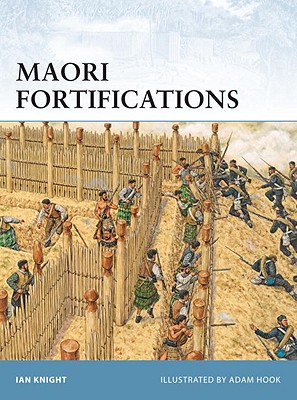Difference between revisions of "Maori Fortifications - Book"
m |
(→Mini Review) |
||
| (One intermediate revision by the same user not shown) | |||
| Line 18: | Line 18: | ||
== Mini Review == | == Mini Review == | ||
| + | {| | ||
| + | |{{Pop}} | ||
| + | |} | ||
Knight is a frequent author for Osprey Publishing including contributing earlier volumes in this Fortress series. He specialises in Victorian military campaigns. His book draws heavily on Best for his account of Maori society and traditional fortifications. One would have welcomed a more modern synthesis that drew on Vayda and Ballara for the role of warfare but it is not there. For a British based author the archaeological material on the fortification of pa may be hard to source but even some help from Fox’s now dated study would have helped. | Knight is a frequent author for Osprey Publishing including contributing earlier volumes in this Fortress series. He specialises in Victorian military campaigns. His book draws heavily on Best for his account of Maori society and traditional fortifications. One would have welcomed a more modern synthesis that drew on Vayda and Ballara for the role of warfare but it is not there. For a British based author the archaeological material on the fortification of pa may be hard to source but even some help from Fox’s now dated study would have helped. | ||
Latest revision as of 16:37, 2 August 2010
Maori Fortifications
Author: Ian Knight
Illustrator: Adam Hook
The Blurb
The Maori people of New Zealand were experienced field engineers and it was common practice to protect villages with surrounding entrenchments and wooden palisades, known as pas. However, it was not until 1845, with the first fighting between the Maori and the British, that it became clear just how strong and sophisticated the Maori fortifications were. For the best part of 20 years, the Maori held off the dominant and technologically superior British forces, by adapting and developing their defences in response to new British assaults. This book explores the evolution and design of Maori fortifications, and charts the course of a conflict that would ultimately see the British break the Maori pas, leading to a bitter guerrilla bush war.
UK £11.99
Paperback; April 2009; 64 pages; ISBN: 9781846033704
Mini Review
This is a POP page.
|
Knight is a frequent author for Osprey Publishing including contributing earlier volumes in this Fortress series. He specialises in Victorian military campaigns. His book draws heavily on Best for his account of Maori society and traditional fortifications. One would have welcomed a more modern synthesis that drew on Vayda and Ballara for the role of warfare but it is not there. For a British based author the archaeological material on the fortification of pa may be hard to source but even some help from Fox’s now dated study would have helped.
A book covers the development of fortifications and tactics in the musket wars very briefly and then concentrates on the New Zealand Wars, presumably an area of greater interest to Knight and his readers. Other than some helpful aerial photographs credited to Kevin Jones, modern surveys of the fortifications of the period do not feature – rather it is well known maps and diagrams of the period that are shown. The historical account does draw on more modern views of the history, though naturaly in a book with this focus, the military dominates over the politics and the social impacts.
Almost all the historical views that are reproduced are credited as “Authors collection” – when clearly he doesn’t own the originals of the great majority. This is sloppy. They are mostly a very apposite collection and it is a shame not to see the real sources credited. Adam Hook is clearly an accomplished illustrator, but at times not very well briefed. He has Maori use of blanket kilts, almost as a uniform in some pictures. His pre-colonial pa approaches the laughable. His view of Pratt’s Sap fails to show the all-important gabions pushed ahead of the sap as it was dug.
The map locates some important sites but has a confused shading key.
British readers may find this a useful introduction to the subject. For a New Zealand reader it is disappointing.
